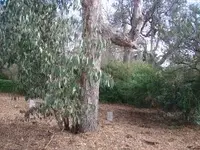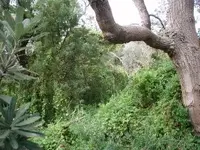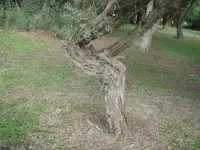mountainborn
Greenie
- Joined
- Oct 24, 2006
- Messages
- 17
- Reaction score
- 0
- Golden Thread
- 0
- Location
- JEEPIN' THE OUACHITA MOUNTAINS
- #1
Thread Owner
I dunno' ! I wonder just how old this thing may be ? Should I maybe cut it down and count the rings ? Someone told me that you could tell a tree's age that way. This tree is beside an old settler's trail that went into Oklahoma Territory. Here is the photo:








